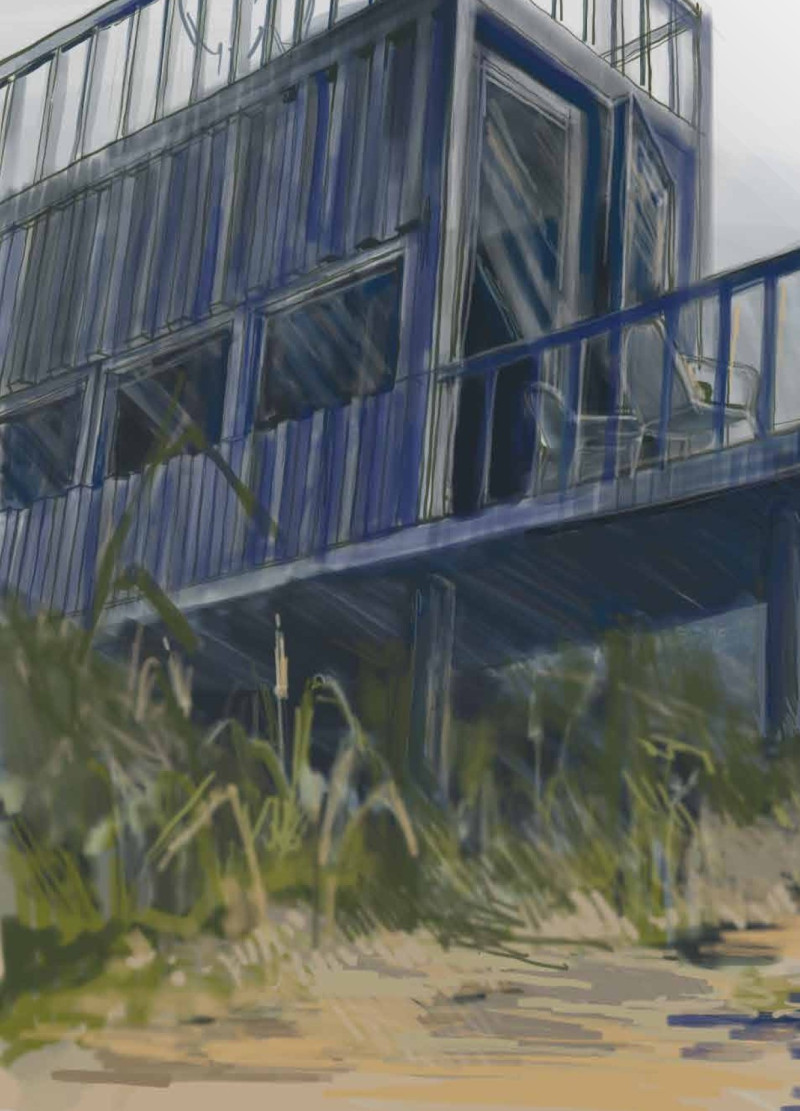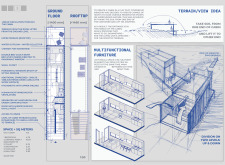5 key facts about this project
CAB I-N2 is a tourist complex located in the rural setting of Skrunda City, Latvia. It aims to provide a distinctive lodging experience through the use of repurposed shipping containers as the main building blocks. The design emphasizes sustainability while also reflecting local culture and the natural environment. Each cabin is crafted to offer visitors a modern retreat that connects them to the rich heritage of Latvia and its waterways.
Design Concept
The project revolves around the use of shipping containers as a practical solution for creating cabins designated for travelers. Repurposing these containers minimizes waste and reduces environmental impact. The architectural form resulting from this choice is practical and visually engaging. It relates to Latvia's maritime history while encouraging interaction with the beautiful landscape that surrounds it.
Spatial Layout
To enhance community and social engagement, pathways connect the cabins, encouraging guests to explore the site. The central common area functions as a gathering space, featuring areas for leisure activities such as sports and yoga. This design integrates various functions, allowing the complex to adapt to a wide range of activities depending on seasons and events.
Cabin Design
Each cabin prioritizes privacy, with entrances concealed by greenery and taller fencing. This thoughtful arrangement promotes a sense of seclusion. Inside, the cabins make efficient use of limited space, offering sleeping areas, dining spaces, and essential facilities for daily living. This layout caters to both day-to-day activities and evening relaxation.
Structural Integrity
The cabins are built upon a metal framework based on repurposed shipping containers. This design ensures stability and durability. Insulated sandwich panels are also used in the construction, providing effective thermal regulation. This approach enhances the comfort of guests while maintaining an environmentally conscious stance.
The design includes a sauna positioned along the riverbank, embodying a traditional element of Latvian culture. This feature connects the complex further with its picturesque surroundings and provides an additional space for guests to enjoy nature and relaxation.






















































